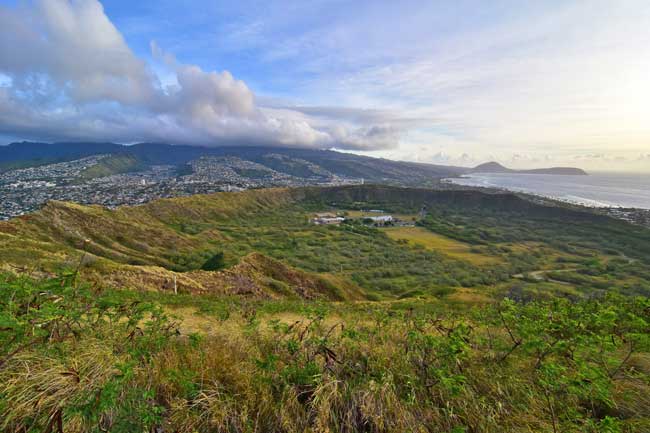

When vacationing on Oahu, part of the Hawaiian Island chain, one of the most photogenic spots in Waikiki Beach is Diamond Head Crater. The sun drums up the energy to rise above the dormant volcano to illuminate Waikiki Beach in the morning creating one of the most beautiful sites in the United States.
Hiking Diamond Head
Hawaiians named this volcano Le’ahi because it looks like the forehead of an ahi fish at its summit. In the late 1700s, Western explorers and traders believed the calcite crystals on the slope of the craters were diamonds. Soon the name Diamond Head became the common name of this area.
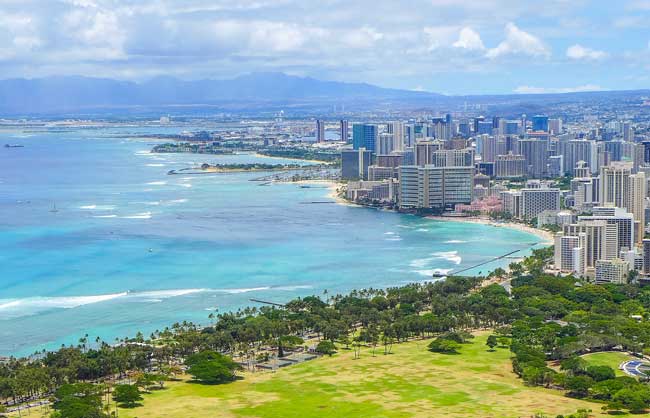
Queen Kapi’olani Hotel
While staying in Hawaii at the newly renovated Queen Kapi’olani Hotel, our one-bedroom suite offered an unobstructed view of the Diamond Head National Park, Waikiki Beach, Kapiolani Park, and Honolulu Zoo. Constructed in the mid-1960s as one of the first modernistic properties in the Waikiki area, this 19-story, 315 room hotel is within walking distance to hiking Diamond Head.
It’s a good morning activity before the sun heats up the two-mile hike inside the volcanic crater. The area opens at 6 a.m., for sunrise hikes through 4:30 p.m., for spectacular sunset views.
If you hike on a Saturday morning, catch the trolley or walk to the KCC Farmers Market at the Community College. It’s open from 7:30 to 11 a.m., serving local farm-fresh fruit, vegetables, flowers and street food. It’s the perfect day trip whether you are staying nearby on the island of Oahu.
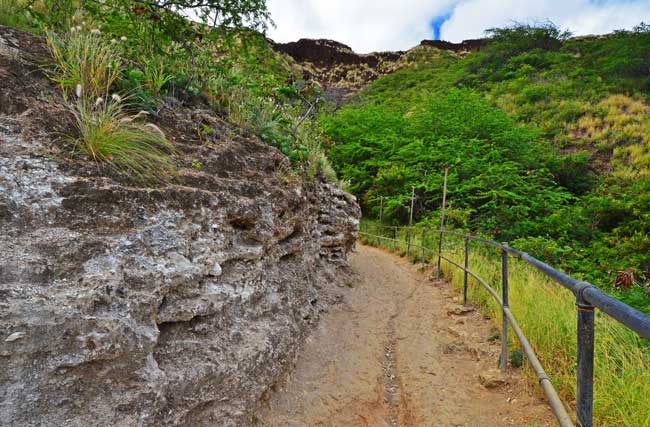
Once you arrive inside the crater, you will notice the U.S. Army Coastal Artillery defense system, built in 1908 to defend Oahu from attack. Fortunately, no artillery was ever fired during a war.
Diamond Head has a semi-arid climate. Plants and animals today include Kiawe (in the mesquite family) growing in the shallow soil. Near the trees are birds that include cardinals, mourning doves and sparrows.
Your Travel Guide to Diamond Head Crater Hike
Starting up the paved and dirt switchback trail, the army left a concrete landing with a rusted winch and cable. This used to lift materials from the crater floor to the bunkers. Stop here for a water break to take in the awe-inspiring Eastern side of the island views.
Continuing along, a steep stairway with about 74 steps leads to a narrow tunnel. It’s dimly lit and about 225 feet long. After this tunnel is another stairway with 99 steps. At the top is a Fire Control Observation Station.
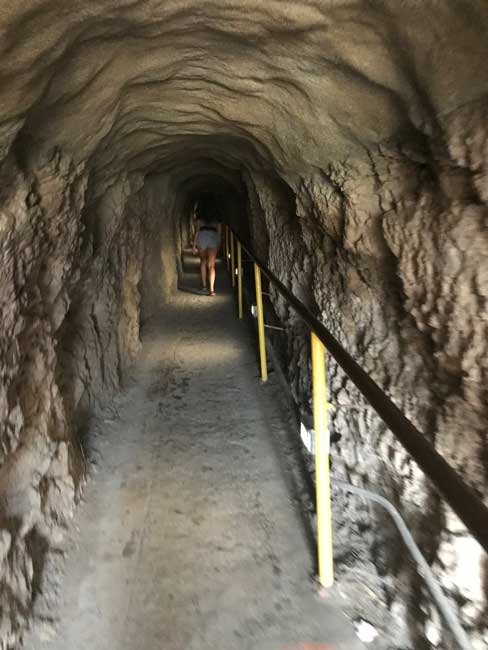
Take the spiral three-level stairway, about 52 steps. Once at the top, be sure to duck, because the ceiling is quite low.
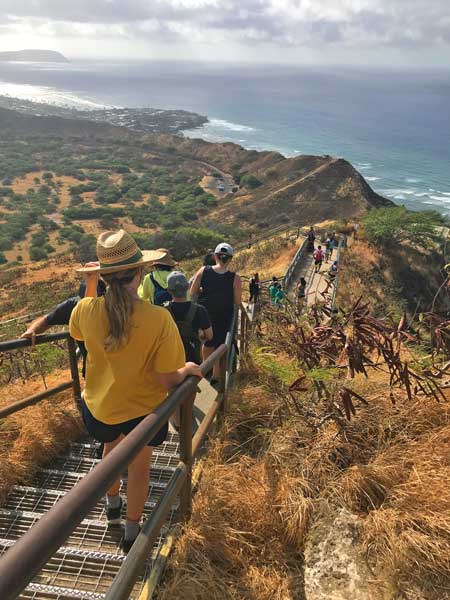
The result is worth all the exercise as soon as you see the sweeping coastal and beach views along Waikiki with beautiful aqua green reefs along the southeastern shore. There is a bunker built in 1915 and the Diamond Head lighthouse below was built in 1917.
At the bottom is a concession truck with water, juice, shaved ice, fresh pineapples and fruit smoothies.
If You Go to Diamond Head
Admission is $1 to enter. There is a small parking lot with a $5 entrance fee if you decide to drive a car to the site. Wear tennis or hiking shoes to maneuver the many rocks, steep inclines, stairs and switchbacks. The trail starts at an elevation of 200 feet to 761 feet. This family-friendly hike is a must-see on the big island.
Visit Queen Kapi’olani on Oahu for reservations
- The Low-Key Magic of Ghent, Belgium - April 22, 2024
- Discover the Hidden Charm of Extremadura in Spain - April 20, 2024
- Life of a Champion: Exploring the Muhammad Ali Center in Louisville - April 19, 2024
